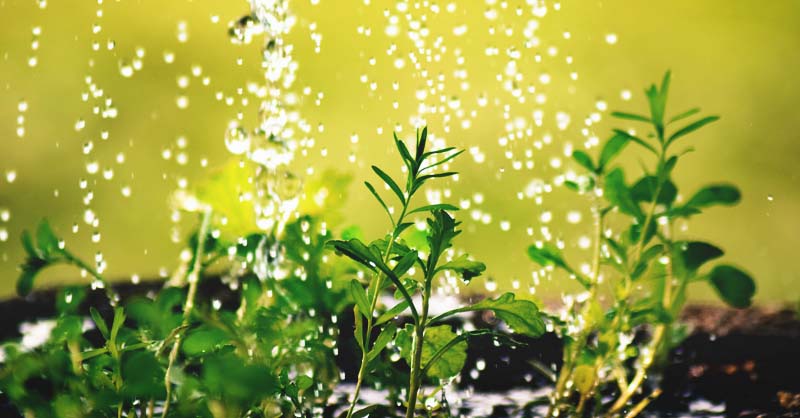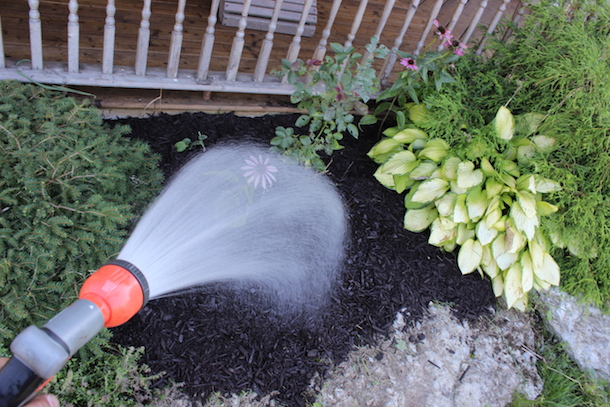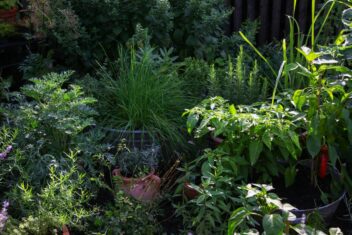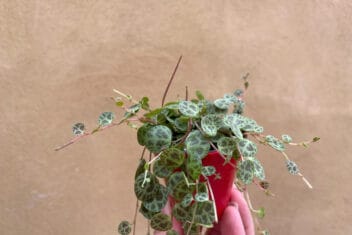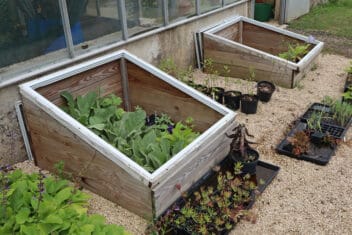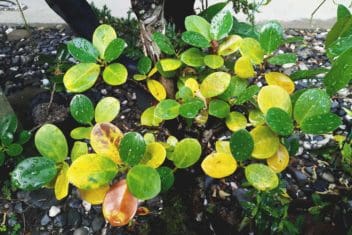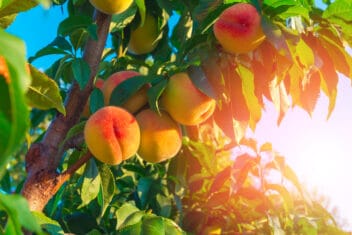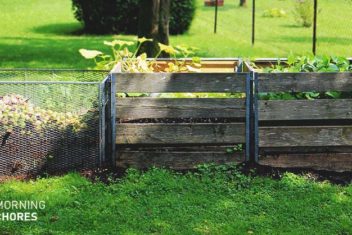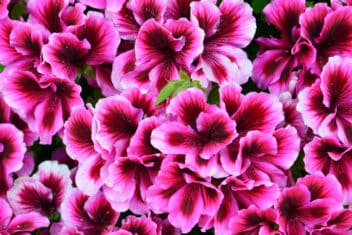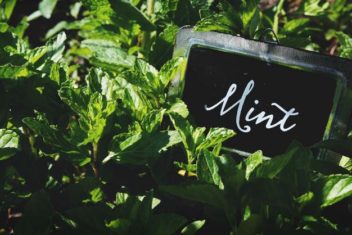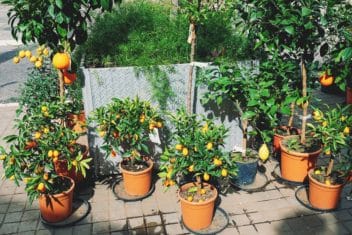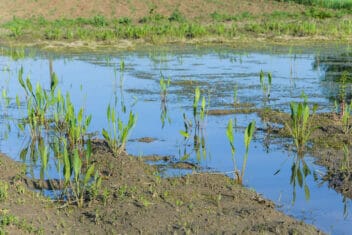Some plants can be tricky to keep adequately watered. If you water too frequently or too much, your plants become weak and waterlogged. If you water infrequently or too little, the plants wilt and die.
Watering isn’t overly complicated. You need to know a few basic rules to ensure you water your garden correctly.
Here they are:
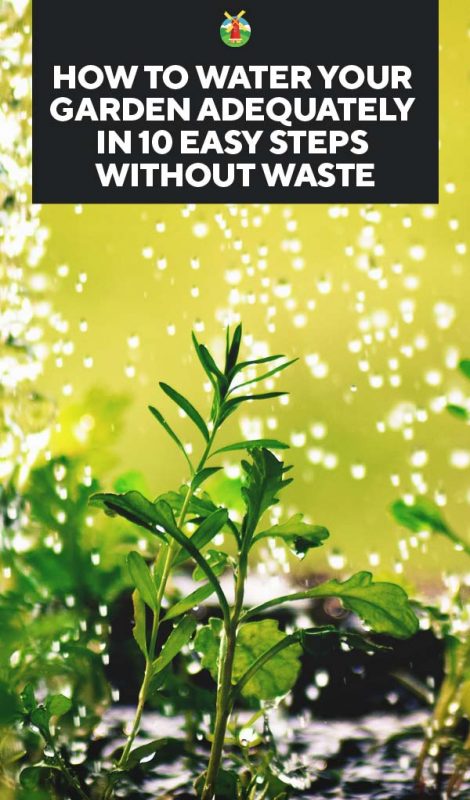
How to Water Your Garden
1. One to Two Inches per Week
It is a standard rule for most plants, watering your garden less frequently but more deeply is the best method. You should try to water your garden one time per week and give the plants one to two inches during this watering session.
You might reason, watering more frequently would be a good thing, but it encourages weak root systems which leads to weak plants.
However, if you water deeper but less frequent, this encourages the plants to develop deep roots which equate to stronger plants.
Watering less frequently for a longer period is a good thing in gardening.
2. Certain Plants Need More

via pioneerdad.com
The above rule is a common rule, but it won’t apply to every plant at every time during the gardening season.
When you have larger plants, it is a good idea to water them once per week but come back by later in the week and stick your finger in the soil next to the plant.
If the soil is dry, you’ll need to water the plant. This same rule applies when you have plants being newly planted in your garden bed.
Also, there are some plants (such as strawberries) which have shallow root systems. These plants will require more water because they can’t develop deeper roots.
It is a good idea to be aware of your plants at all times. The different stages they go through will add different watering specifications throughout the season.
If you don’t water your garden properly, you won’t receive a full harvest.
3. Know Your Plants
| Plants | Amount of Water Needed Per Week (inches) | Amount of Water Needed Per Week in High Temps (inches) |
| Tomatoes | 1.5 | 2-3 |
| Peppers | 2 | 2-3 |
| Green Beans | 1 | 1.5 |
| Corn | 1.5 | 2-2.5 |
| Squash | 1 | 1.5-2 |
| Melons | 2 | 2.5-3 |
| Pumpkins | 1 | 1.5-2 |
| Eggplant | 1 | 1.5-2 |
| Strawberries | 1 | 1.5 |
| Cabbage | 1.5 | n/a |
| Lettuce | 1 | n/a |
| Kale | 1 | n/a |
When deciding what to plant in your garden, it is important to do research before planting. You’ll especially want to know when or if any of the plants will have higher water requirements.
If they do, you need to know when they are to make sure you fulfill those needs.
For instance, corn needs more water when it is tasseling. Tomatoes and peppers are mainly water. It should be no surprise they have additional water requirements from the time they begin to bloom until harvest.
It is essential to know your plants because if you fail to meet those added requirements, your hard labor will be in vain.
4. Add a Rain Gauge
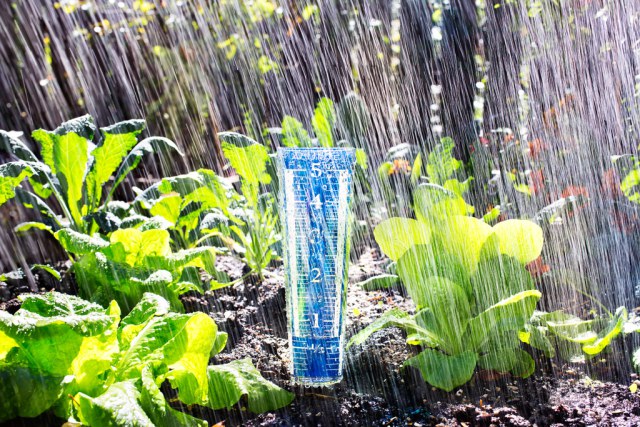
via bonnieplants.com
This is an idea I wish I had known in my earlier days of gardening. You should place a rain gauge in or near your garden.
When it rains, you’ll have an idea of how much water your plants have already received. You can gauge from there how much more water you’ll need to add to them during the week.
It simplifies watering and should help you avoid letting your plants be too dry or becoming waterlogged.
Keep in mind, the state of your soil is going to play a role in how much water it can absorb and keep over more extended periods.
However, a rain gauge should show how much has been applied to the soil. It can also help you figure out if you need to amend your soil in any way because it isn’t holding moisture.
5. Water More Frequently When It’s Brutally Hot
If you live in a location which has brutally hot summers, you should consider watering more frequently during these time periods.
During hot weather, you need to do regular walk-throughs in your garden. You can check the soil and see how dry it is becoming.
It is recommended to do these ‘check-ups’ two to three times a week. This way if the garden needs water, you will know and can meet the need.
Also, when dealing with larger plants, it is a good idea to add a half inch of water per watering session for every ten degrees the temperature is above average once it reaches over 60 degrees Fahrenheit.
This should help keep things adequately watered not to have to water more frequently than once a week. You should be sure to check tomatoes, eggplants, and peppers when using this method to keep everything moisturized as needed.
6. Don’t Wet the Foliage
This step in the watering process is one of the most critical steps. When watering, you should not wet the foliage of your plants.
You will want to use soaker hoses to water your garden, if possible. If not, make sure you water your plants earlier in the day to give them time to dry.
However, it is best to avoid getting the foliage wet because many diseases need wet environments to prosper.
If you don’t give diseases the right conditions, your plants should remain healthier.
7. Water at Certain Times
As I briefly mentioned already, you should water at specific times of the day.
The best time to water is in the early morning right as the day breaks and the temperature still low so there’s no evaporation. If you water in late afternoon, your plants won’t have enough time to dry before sunset, and thus giving disease the perfect breeding ground which could destroy your garden.
You can use a timer which will automatically water your garden for you if you are worried this time might be inconvenient. If you can’t water in the morning and have to do it in the late afternoon, be sure to only use soaker hoses.
8. Know Your Soil
As much as you need to know your plants, you need to be aware of the soil you are planting them in too.
Certain soil types will be prone to hold in more moisture than others. Sandy soil will be faster to dry out. Whereas clay soil will tend to hold more moisture.
At times, clay soil will hold too much moisture. Therefore, it is important to work on your soil. Great soil for planting and growing, will be airy and will drain well.
By adding organic matter to the soil, this will help your sandy or clay soil take on these healthy qualities and give your plants a better chance of being evenly watered.
Instead of allowing your plants to grow in conditions where they could become dry or waterlogged.
9. Too Wet, Too Dry – Mulch
It is vital to make sure you amend your soil where it can drain properly. It is also essential to make sure you water deeper and infrequently (when possible.)
If you don’t do these things, it is possible your soil could retain too much water or not enough water. This will equate to dry plants or plants with too much moisture.
You may be wondering why watering plants too much is as big of a deal as plants lacking water. When plants have too much water around them, the water clogs the pores of the root system.
This stops the roots from being able to absorb water or food for the plants. In turn, this causes the plants to die.
However, a great way to help soils (both poor and healthy) to retain necessary moisture and keep things balanced is to apply mulch around the base of each plant in your garden.
10. Plant Indicator Plants
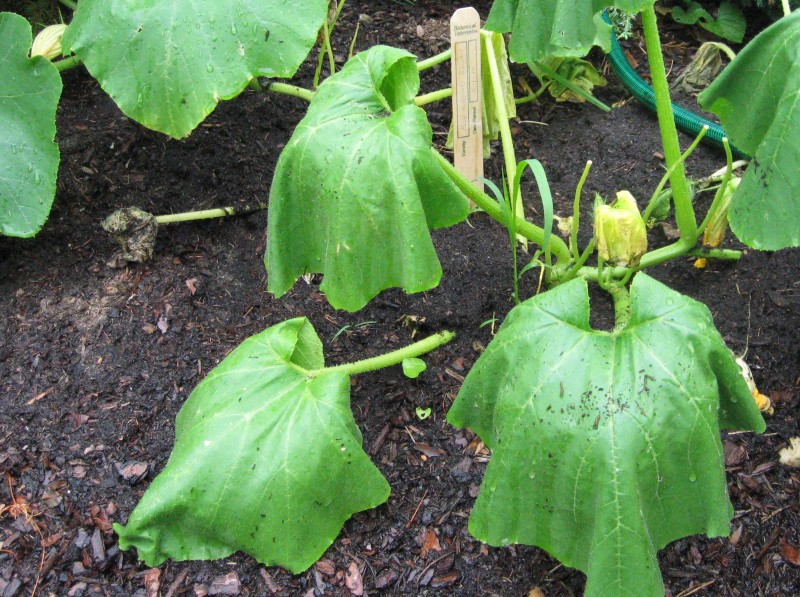
via migardener.com
Finally, a great way to know if your garden is getting enough water is to watch indicator plants. These plants have larger leaves and will show signs of wilt when they are running low on water.
Keep in mind, these plants may wilt during the heat of the day but should make a quick recovery once they are given some shade.
The plants you want to keep in your garden for water indication are squash, cucumber, and melons. Check them in the morning and at night.
If you begin seeing wilt taking place on the larger leaves, you’ll know your soil is probably dry and will need attention.
Well, you now know ten different tricks to watering your garden in a way everything should stay well moisturized without being too wet or too dry.
But I’d like to hear from you. How do you water your garden? Do you have a method which produces healthy plants every year?
We love hearing from you. Let us in on your secret by posting your comment in the space provided below.

